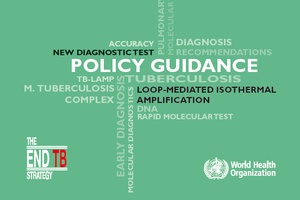WHO recommends new TB test
Robust, rapid DNA-based test can serve as an alternative to sputum smear microscopy.
Geneva, 11 August 2016 – The World Health Organization has issued a recommendation for a rapid and robust test to diagnose pulmonary tuberculosis (TB) in peripheral health centres. The test, known as TB-LAMP (loop-mediated isothermal amplification), requires minimal laboratory infrastructure and has been evaluated as an alternative to sputum smear microscopy, still the most widespread test in use in resource-limited settings.
The LAMP methodology has already been used successfully for the detection of malaria and several neglected tropical diseases. TB-LAMP is a unique temperature-independent way of amplifying DNA from TB organisms. It is a manual assay that takes less than one hour and results can be read with the naked eye under ultraviolet light. The robust TB-LAMP instrument can be used at the peripheral health centre level where microscopy is often performed.
TB-LAMP provides better results than sputum smear microscopy, detecting 15% more patients with pulmonary TB if done in all persons presenting with signs and symptoms of TB. If used as an add-on test after microscopy has been done, the increase in TB cases detected among those with smear-negative results is more than 40%, comparable to other rapid tests that have been recommended by WHO in recent years. The test does not detect drug resistance and is therefore only suitable for testing of patients at low risk of multidrug-resistant TB (MDR-TB). It can be done outside of conventional laboratories but requires training of health care staff, similar to the training needed for performing sputum smear microscopy.
Rapid, accurate diagnosis is critical for timely initiation of treatment, better treatment outcomes, and, ultimately, ending the TB epidemic. The WHO End TB Strategy calls for the early diagnosis of TB as one of the key elements to ensure improved case detection.
“Thanks to accelerated research in TB diagnostics over the past 10 years, we are now in a much better situation in that countries have increasing options for diagnosing TB,” said Dr Karin Weyer, Coordinator of Laboratories, Diagnostics and Drug Resistance in WHO’s Global TB Programme. “In the era of the WHO End TB Strategy, one size does not fit all anymore and making the right choice of technologies depends on careful assessment of the TB and MDR-TB epidemics at country level.”
To access the new WHO Policy Guidance on TB-LAMP, click here.
Source: WHO


